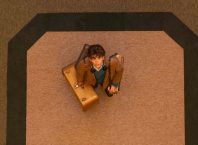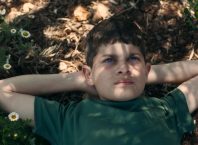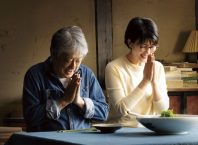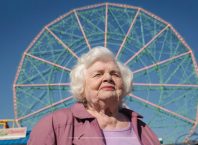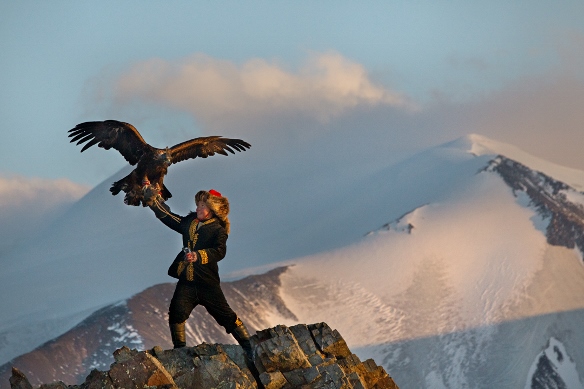
Amid the stark, vast, snow-covered landscape of the Altai Mountains in Mongolia a hunter releases his companion, a Golden Eagle, back into the wild following an ancient tradition passed on from father to son for generations.In The Eagle Huntress, the opening film of the The Tel Aviv International Children and Youth Film Festival, the focus then shifts to a school classroom, full of girls in neat braids and bright white pinafores. One of these girls is Ailshopan, just on the brink of turning 13, and about to change tradition forever by becoming the first Eagle Huntress.
The Tel Aviv International Children and Youth Film Festival, which takes place from July 7 – 17th, is celebrating its 12th edition this year, a significant coming of age in Jewish culture, and takes as its theme films about children who evoke inspiration. The Eagle Huntress, Otto Bell’s debut documentary film, encompasses tradition and change, in an unusual and inspiring coming of age story.
The Khazaks, nomads dwelling in the Altai Mountains of Mongolia, have been Eagle Hunters for ages, a tradition passed down from father to son. The eagles are not bred in captivity, but rather captured from the nest as chicks, then raised and trained to hunt. The bond between hunter and eagle is a close one, and after seven years of hunting together, the eagles are returned to the wild as shown in the film’s opening sequence, maintaining a balance and harmony with nature.
The film follows Aisholpan, the daughter of a champion Eagle Hunter, who is being trained by her father. She is a remarkably composed young girl with a radiant smile, and unassuming strength and confidence. She has a competence and affinity with the eagles acquired through years of helping her father, and a clear sense of purpose. The film gives a sense of daily life in the yurt, the annual move to temporary houses in the harsh winter, and school life in the dormitory where Aisholpan lives with her younger sister and brother for five days a week. The film is a window onto a society on the brink of change, continuing and respecting tradition, yet also integrating the new possibilities offered by technology.
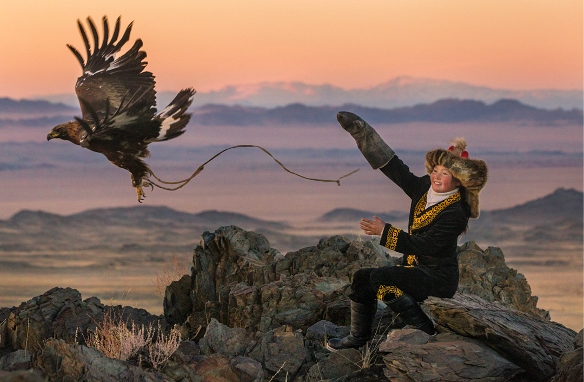
The inspiration for the film originated in a photograph taken by Israeli photographer Asher Svidensky, who is a co-producer of the film. Svidensky, who had the good fortune of working as a photographer during his IDF service, upon completion, like many Israelis he set out to travel far and wide, taking along a camera. Svidensky was searching not only for images, but for stories. This desire led him to the far west mountains of Mongolia, to the eagle hunters, and it is there he found Aisholpan. Svidensky’s photographs of the young girl and her eagle caught the eye of Otto Bell, who set out to meet this remarkable young woman and her family.
Bell’s film follows Aisholpan’s life and training, as she sets out to capture an eagle, participates in the annual Eagle Hunting Festival and attempts her first winter hunt. Aisholpan’s cheerful character and her love for the eagles shines throughout the film. One of my favorite scenes takes place just before she enters the festival competition. Aisholpan feeds her eagle (beware sensitive souls – these birds eat raw meat), and talks to it affectionately as it cries out for more, saying, “You may not be able to fly if you eat too much,” then takes out a small vial of pale blue nail polish and begins to paint her nails. When her younger sister steps out of the family yurt, Aisholpan offers to do her nails too, and the two sisters sit companionably together with the eagle.
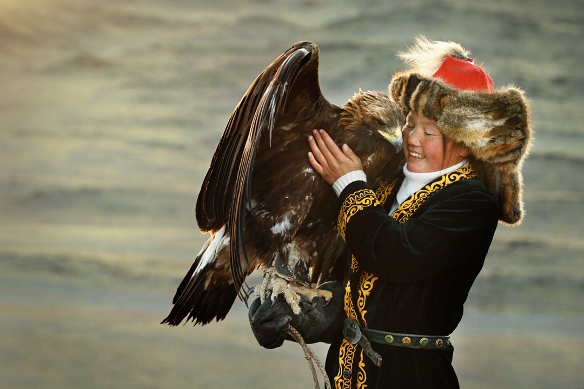
The cinematography is spectacular, the beauty and severity of the landscape permeates the film with majesty and omnipresent danger. Hunting is not a sport for the eagle hunters, it is a means of survival in a harsh environment. There are a few, very short scenes that might be difficult for some viewers (raw meat, fox hunting), but that is the exception. The film is very smoothly edited, to the extent that it almost feels staged, but it’s all true. Aisholpan is simply an amazing person, with an incredible affinity for eagles, many talents, and no less important – a very loving and supportive family.
The Eagle Huntress is one of 8 films in the festival’s International Competition. Participating in the competition are: Oddball (Australia, 2015) recommended for ages 8+; Windstorm 2 (Germany, 2015) recommended for ages 12+; Blanka (Philippines 2015) recommended for ages 8+; The Trap (India 2014) recommended for ages 13+; The World of US (South Korea 2016) recommended for ages 9+; Miss Impossible (France 2016) recommended for ages 12+; The New Kid (Belgium 2015) recommended for ages 11+; The Eagle Huntress (USA 2016) recommended for ages 11+. All International Competition films, as well as films in the Panorama category, are scheduled to be shown with subtitles in English and Hebrew.
UPDATE: Due to popular request, there will be an additional screening of the film on Tuesday, July 12th at 16:30 in Cinema 3 of the Tel Aviv Cinematheque. The screening will be followed by a talk with the film’s photographer Asher Svidensky at 18:00.
Links: The Tel Aviv International Children and Youth Film Festival site (in Hebrew); facebook page.
Asher Svidensky’s blog – The Eagle Huntress Story

